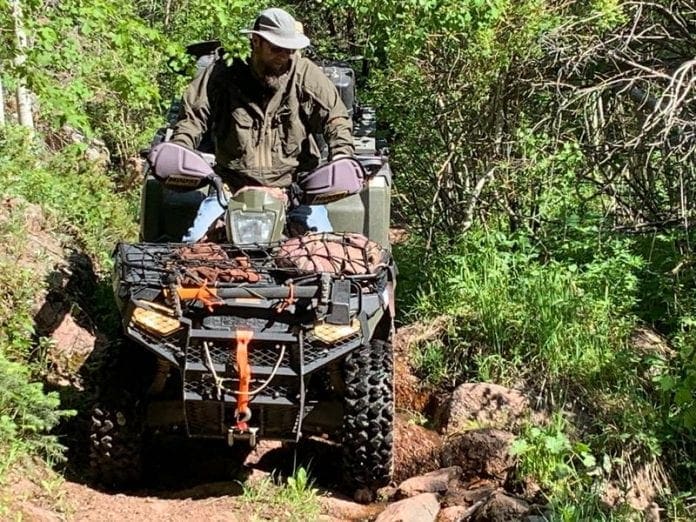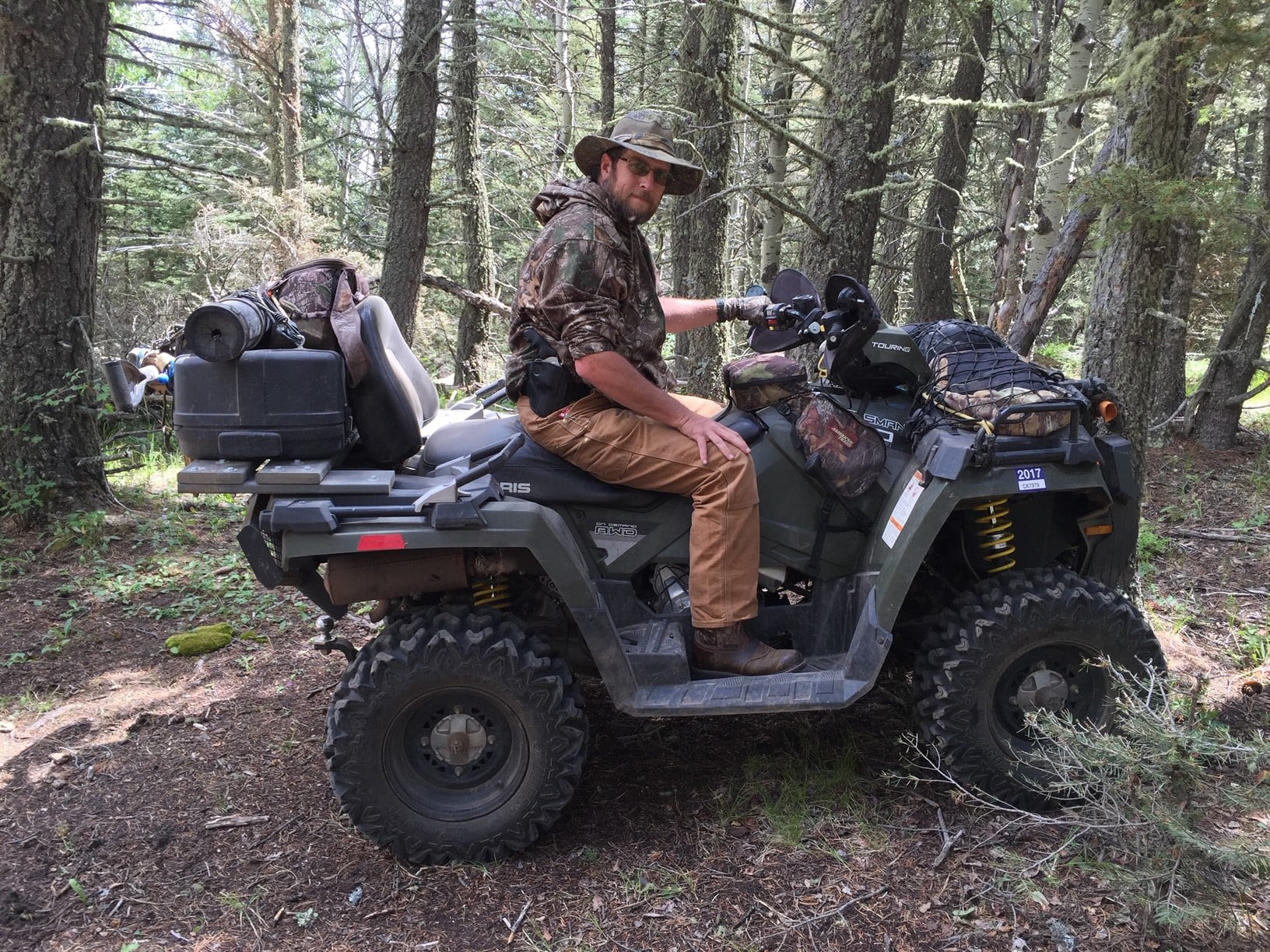
Outfitting An ATV For The Rocky Mountains
As draw results come in for big game hunts across the Rocky Mountains, many of us are scouting the hunting areas we have obtained tags for. An often-maligned tool in scouting and hunting efforts is the All-Terrain Vehicle or Off-Highway Vehicle. While many of us decry the sounds of an ATV operating on a trail in our hunting areas, they remain a valuable tool for the sportsman when used legally and properly. And, I would hazard a guess the majority here either have an ATV in our stable or access to one.
My ATV Background
I have used or owned an ATV from almost every popular manufacturer in my 13 years as a commercial forester and logger, and over 40 years of riding the mountains for recreation. All had benefits and limitations. I used to put more than 5,000 miles per year on an ATV and still ride trails at every opportunity during the summer. I’d much rather feed my ATV $5 in fuel once a week than horses every day!
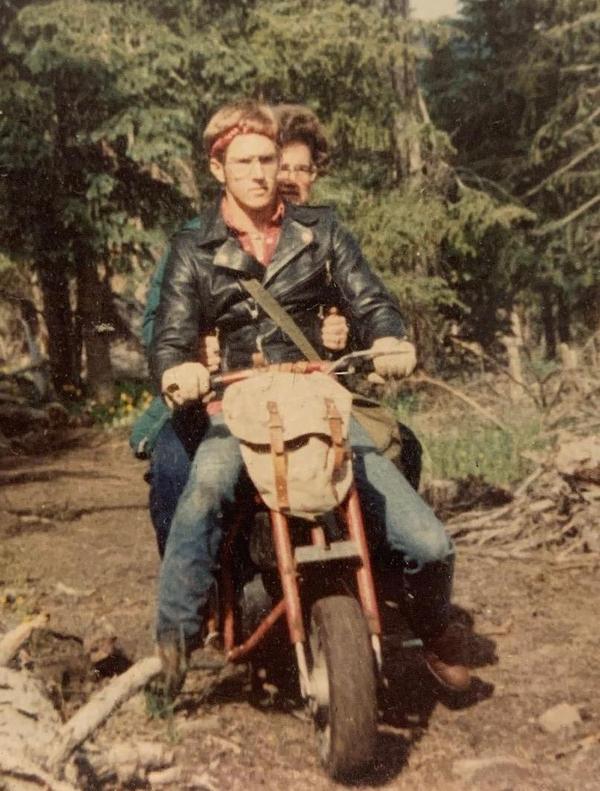
The ATV can have many uses for the hunter
shed hunting, getting to glassing points and scouting game, saving vehicle wear and tear on rough roads, game recovery, getting a few miles in before packing, supply point stocking, exploration of new areas for future hunts, recreation with family There are some 4WD access roads my truck can certainly make, but using the ATV is so much easier and any hassles resulting from a thunderstorm turning the road to adobe clay are avoided. When hunting out of my trailer, my ATV also allows me to set a base camp lower in elevation and save bouncing the trailer up rough access roads or getting stuck up high due to weather. With new trucks hitting north of $50,000, every opportunity to extend the life of my truck is taken advantage of, and the ATV allows me to avoid potential damage to my truck.
When hunting an area, I look for trails that are near where I am hunting. More than once I have found it easier to pack my gear or meat to an ATV trail and stash it, then use the ATV to retrieve it rather than pack all the way back to where the truck might be located. Like a floorless shelter, an ATV might not be part of your regular kit but may be worth exploring as an option to aid in certain circumstances.
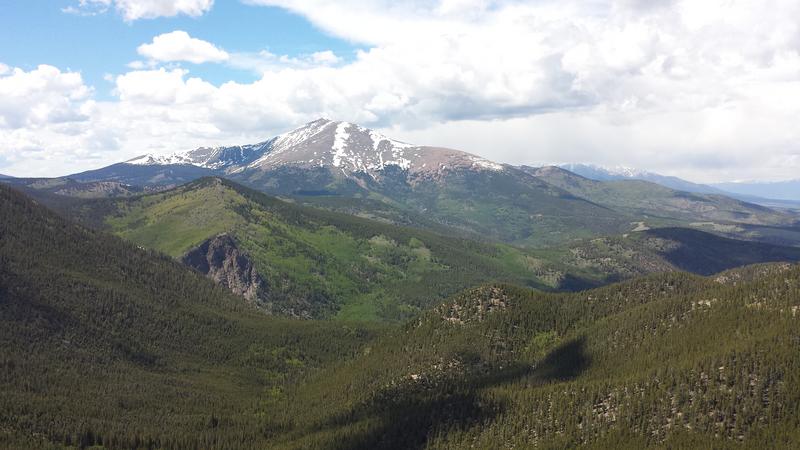
Choosing an ATV
Picking the right caliber weapon or broadhead is easier than choosing an ATV. Everybody has an opinion on the best brand and model, and the truth is consensus will not be had. Choosing what works best for you is the key goal. Many already have an ATV so this section will be brief and aimed at the hunter who may be choosing a new ATV soon.
What is your limiting factor? Just as choosing a weapon for a hunt is aimed at picking the best ballistic solution for the species being pursued. When choosing an ATV we must be aware of what single factor is going to be best most important for our use. Examples of what I term limiting factors are:
- Ability to legally carry two individuals
- ATV width and the trails that will be used (48” width trail restrictions)
- Utility outside of hunting seasons (e.g. agricultural use)
- Extreme terrain capability
- Cost
- Dealership support in area ATV will be used
My Key Needs
Here is a quick example from my own experience. My ATV is used primarily for recreation with my daughter so the ability to legally carry two individuals was paramount. I wanted the ability to ride all ATV trails so 48” width or less was critical. That limited my selections to “two-up” models, also called Touring models by some manufacturers. Hunting was an important secondary use, but ties into the recreation aspect in that we are always scouting new hunting opportunities when enjoying the wilds of God’s creation.
Our local dealers carry the big five of manufacturers
Kawasaki, Yamaha, Suzuki, Polaris, and Can-Am. When I looked at dealer support in the area where I did most of my elk hunting, Can-Am was not supported so that was a red flag – though their reputation was very high among the competitors. Checking pricing and options available from the remaining choices, Polaris was the winner. A new 2014 Polaris 570 Touring was added to the stable, replacing my 1987 Yamaha Big Wheel motorcycle to transport myself and my (then) 8-year-old daughter around the forests of Colorado and Utah.
Do Your Research
It’s very important to research known problems when choosing a machine. I failed in this regard. I was so excited to get the Polaris I did not check the plentiful online forums available discussing the model I bought. Only after did I learn of the issues with the “first model year” of the 570 Touring: heat issues with the exhaust melting the side plastics and the seat being the biggest issue. 40 hours and $200 was spent in the first 6 months correcting this design issue and had I known about the issue prior I would have likely chosen another option
Do your due diligence and check the forums for commonly known issues and limitations before dropping the $8,000+ on a machine. Some problems are easily overcome, others may continue to be a source of frustration. Even seemingly benign issues like headlight placement can be an issue – Polaris has a great “bright” headlight on the handlebars – but if you have anything strapped on the front rack it is basically unusable. Think about these things beforehand and how you will be using the machine.
Transporting the ATV
How will the ATV be transported – and will you need to transport more than one? As truck beds continually shrink, the solutions to hauling can become trickier. My 2007 GMC has a 6’6” bed, and the ATV has a 7’ wheelbase. That’s an issue! Luckily, from years of using an ATV, I knew about solutions such as tailgate supports that secure the tailgate safely when hauling an ATV in a short bed truck.
If you use a trailer as a base camp, then issues of hauling an ATV may include changing to a “toy-hauler” model or having a partner transport ATVs with their truck. Traveling to and from my hunting areas every year I see trailers parked on the roadside with burnt up wheel bearings or an ATV that bounced off the trailer because the $5 Harbor Freight ratchet strap holding the $10,000 investment broke. Trailer maintenance is critical to avoid preventable delays when traveling to and from the woods. Invest in quality tie-down straps – at $60 for a set of four, it is cheap insurance from losing an ATV on a bumpy access road or highway pothole. Use two, just in case! Annually inspect all straps for UV damage or fraying of the nylon and replace as necessary.
ATV Upgrades
I cannot remember power ever being a limiting factor when trail riding with any ATV. I have used quads ranging from 250cc up to 1,000cc, and have never lacked for power. Traction and suspension have always been the issue. Generally, factory tires are on the lower end of the scale for durability and traction. Trails in the Rockies are rarely just dirt. Rocks ranging from pea gravel to boulders comprise the majority of trails in the Rockies and the selection of tires should mirror these trail conditions. Tree roots lie in wait along trails ready to grab a sidewall. On the eastern plains prickly pear cactus wait to devour 4-ply tires.
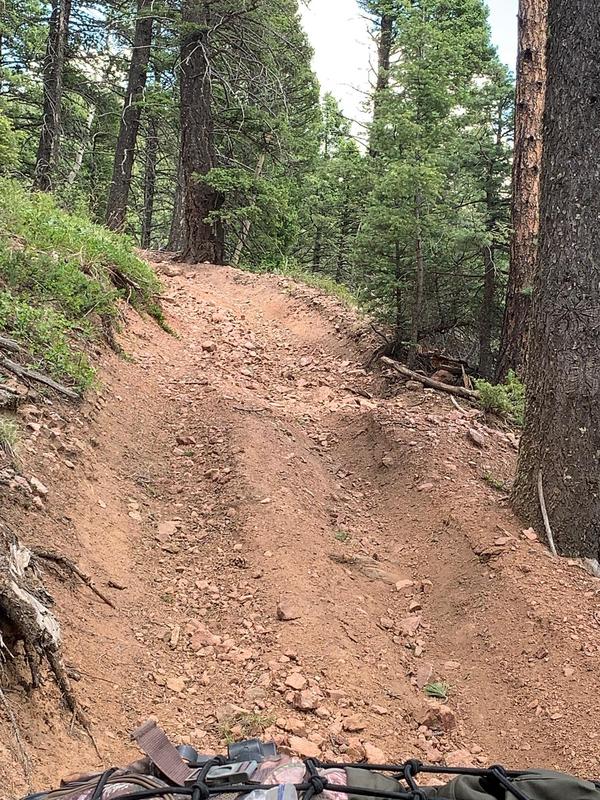
ATV Tire Selection
The wide gaping of self-cleaning lugs on mud tires can cause traction issues in the rocks. I chose Sedona Rip Saw tires for my machine and consider that the best investment I ever made for the rocky trails of Colorado. Many other brands and options are available – again check the forums and make sure you are getting advice from those who regularly use their machines in the Rockies, not the mud pits of Missouri. Be forewarned – opinions on tires are as vocal as opinions on which cartridge is best for elk.

Many factory tires are 4-ply, which are susceptible to being ripped open on the rocky trails of the west. I recommend 6 or 8-ply tires. Again, consult the ATV forums when choosing after-market tire upgrades. Many of the better and heavier-ply tires suitable for the Rockies weigh more than factory offerings, which may necessitate upgrading drivetrain components when certain thresholds are reached. Also, resist the urge to increase tire sizes or install lift kits – while they might look cool you are altering the center of gravity for the machine and changing the suspension dynamics.
ATV Suspension
When using an ATV to haul in a spike camp or other heavy loads, you will often find factory suspension lacking and anemic. High Lifter is one of many reputable companies that sell heavy-duty suspension components that will make your ATV safer and more comfortable to ride. I went with heavy-duty springs on all four corners and spacers in the rear also. The factory suspension was weak on the Polaris and the sag was noticeable when we both were on the machine along with our gear.
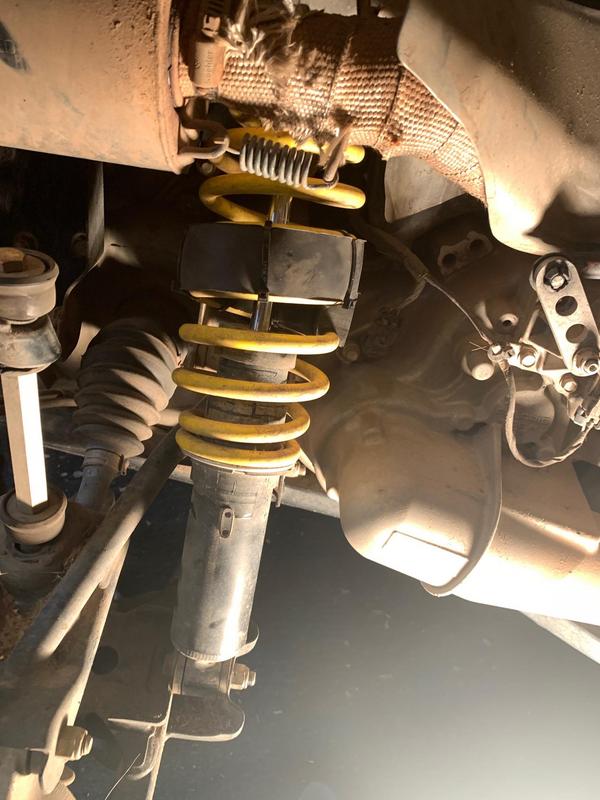
Day Gear Versus Permanent Gear
I have learned to separate permanent and day-use gear on the machine. I carry a separate backpack strapped to the front of the ATV specific for that day’s activities. The less likely you are to mix day gear and permanent gear the better. I always know what gear is resident and permanent on the machine which is great peace of mind when the unexpected happens. There is never any guesswork whether I loaded or unloaded a critical piece of gear.

Inside of rear luggage compartment: extra coats and sweatshirts, 12’x12’ blue tarp, fire extinguisher, first aid kit, wrench set, survival kit. Note shovel on the rear of the luggage.
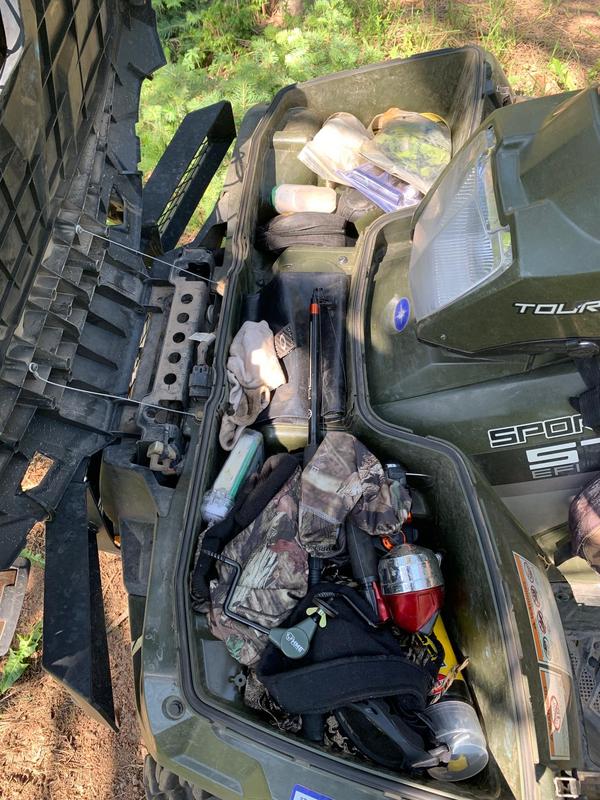
Front storage compartment: can of fix-a-flat, 2 telescoping rods, fishing kit, extra headgear, trash bag, tire repair kit, Ziploc bags for fish, extra toilet paper, extra straps, and snubbers.
Not shown in the above photos and secured in the rear under storage compartment: snatch block, tow strap, vehicle registration, toilet paper, 12V mini-compressor, and tubes of sunscreen and bug repellent. In the tank bag: extra riding gloves, GPS, trail map, and a pair of retired binoculars to take advantage of any glassing opportunities.
Safety Gear
I am a huge proponent of handguards. Even wearing gloves, ¼” limbs from trees alongside the road can act like whips on your hands causing a temporary lack of control. Even worse, a friend drove into a dead spruce twig overhanging the road and it went into her hand (through a leather glove), causing loss of control of the ATV and a minor wreck. The bigger issue was she could not drive her machine out due to the injury to her right hand, which controls the throttle. A set of soft or rigid handguards can prevent such injuries.
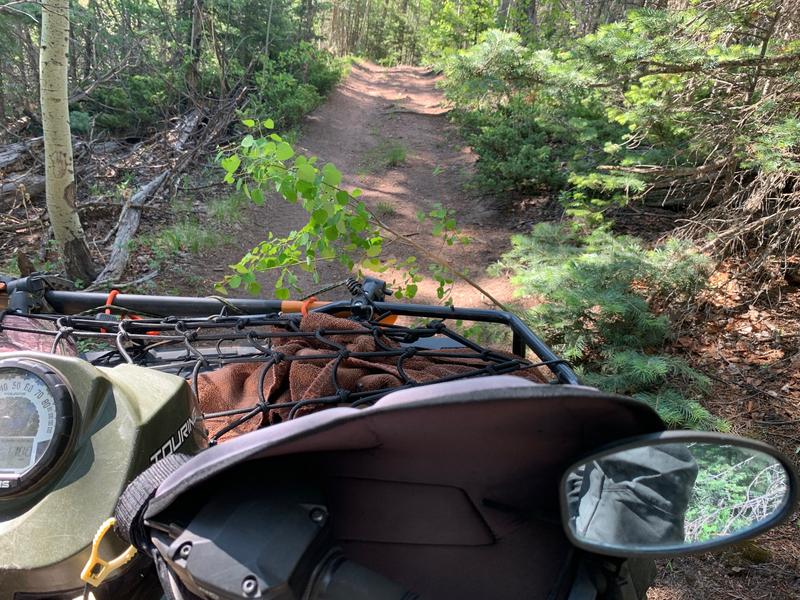
Check state and land management agency requirements for helmet requirements for youth riders and passengers. I always recommend gloves for the rider and also any passenger. Also, wear eye protection when riding! Dust and bugs can cause temporary distraction which leads to a wreck.

ATV Bumpers
More and more ATVs are coming with factory-installed front and rear bumpers. I have witnessed unprotected bikes made undrivable after a slow speed encounter with a tree or a bump from another rider not paying attention. We are using the machines in challenging environments, mistakes and the unexpected can happen. Everything we can do to outfit the machines to survive unintended challenges along the way the better. The best bumpers I have ever used are made by Guru.
An ax and shovel accompany me on every trip
As ATV trails meander through the woods, inevitably, trees will occasionally fall and block the trail. This almost always occurs where it is impossible to turn around also! Having a sharp ax to clear the trail for yourself and the next rider is critical when engaging the Rockies. The shovel is just a good tool to have available. Whether freeing a stuck ATV, snuffing out a lightning strike fire at the base of a tree, or digging a cat hole for the morning constitutional, I consider a small shovel a necessity.
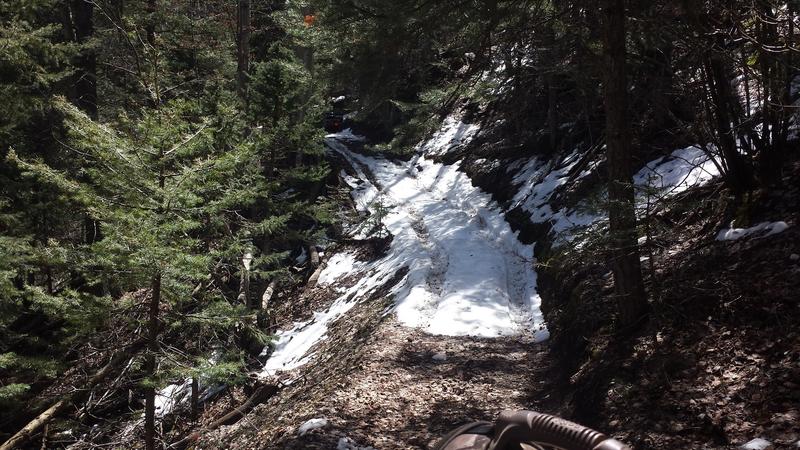
Really – a fire extinguisher?
Absolutely! It only took one time of seeing a fellow rider’s machine catch fire when the ATV flipped on the side as a rock gave out on the trail to make me a believer. The ATV laid on its side and fuel dripped on the exhaust header and ignited. Luckily, I was riding my Polaris 6×6 at the time and had most of my logging gear on it complete with extinguisher and shovel. Some melted plastic was suffered but the machine rode out just fine after we righted it and made some field repairs. It made me a believer in keeping a small extinguisher on the ATV.
Other Necessities
Always keep a first aid kit on the machine. I also keep a bottle of bug spray and sunscreen on the ATV. Always keep a spare pair of webbing straps on your machine. Whether strapping elk quarters onto the racks or securing a broken fender or piece of luggage for a ride home, these will prove invaluable time and time again. Remember to put them back!
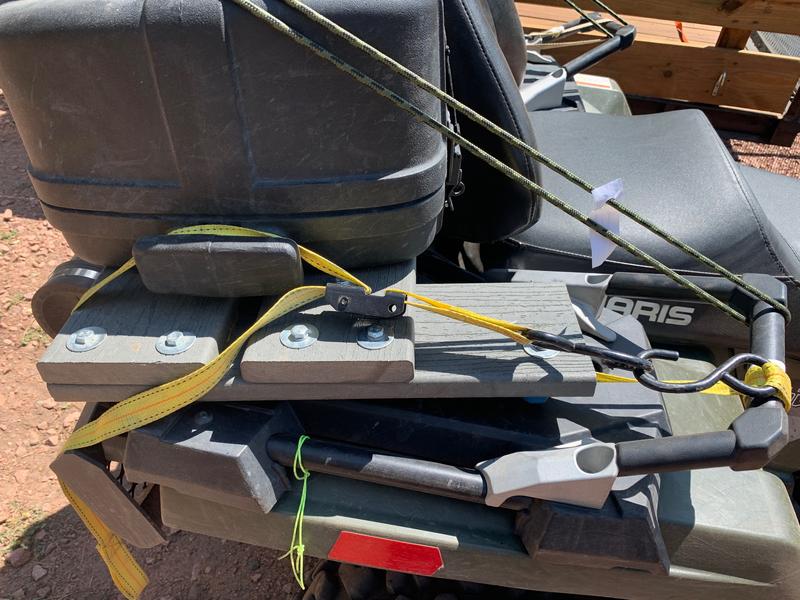
As A Side Note
I have seen more ATVs flipped and accidents happen when loading and unloading them out of a truck than anywhere else. Please, PLEASE, use safety chains/straps on the ramps so they don’t kick out when loading and unloading. Also, remember that the winch fairlead on most ATVs sticks out an inch or two and just happens to be perfectly aligned with the rear window on your truck – go slow loading and avoid breaking that glass! The last gem on loading in trucks – do you have a rubber mat in the bed of your truck? Realize that water collects there and acts as a great lubricant when you suddenly stop the ATV at the top of the ramps – again sending the ATV into the cab of the truck. Not admitting I have done it – just passing along what I “have seen” over the years.
Vehicle Recovery
Breakdowns or wrecks occasionally happen and being able to get through the inconvenience safely is the key. When riding solo, the ability to self-extricate is essential. A winch is one of the best insurance policies on an ATV. In addition to the winch, a recovery strap and a snatch-block are essential. Use safe and proven practices to extricate your machine or someone else but be prepared for the eventuality.
These machines are HEAVY: 300-800#. If a machine tips on its side, it may be more than you can handle to flip it over. The winch can save the day. Or – take the ax and cut a pole to use as leverage to right a machine. Use the shovel to dig a depression under the tires to prevent the ATV from skidding on its side as it is being righted.
A Tarp Can Be Invaluable
Only twice in 40 years of riding have I encountered a breakdown in the woods that required an overnight stay. Both were related to tire failures (of stock 4-ply tires!) while riding many hours deep into the Paiute Trail system in Utah. I was glad to have a tarp in my luggage and a quick temporary shelter was welcome overnight as I tended a small campfire waiting for a replacement tire and rim to arrive. Similarly, thunderstorms are common in the high Rockies, so having a quick shelter available can make the difference between misery and just a delay.
Tire Repairs
Small tire punctures can be repaired on the trail. Sidewall rips cannot. I always carry a tire repair kit and replace my can of fix-a-flat every Spring. (I learned the hard way that freeze-thaw cycles on a can may render it unusable when needed most!)
Nice to Have
I always keep a spare set of coats on the ATV. More than once a sudden thunderstorm has caught me while riding. It is nice to have a dry layer to put on for the ride out.
When riding the Rockies, you will likely encounter a beaver pond or a small creek or two. I have two budget Walmart telescoping poles on my ATV with a little fishing kit and a bottle of petrified salmon eggs from the previous year. A lot of brookies take an ATV ride back home with me every year. Make sure you are properly licensed and know special regulations for species and areas you may fish.

Trash Container
Whether from the kid’s Lunchable or a cold beverage on the trail, a trash container is essential. Trash bags have a bad tendency to be forgotten until another trip a week or two later when you surprisingly find out the kid only ate half of her meat and cheese and the trash sack was forgotten in the luggage. I made a nifty trash tube from PVC sewer pipe and two rubber caps and hose clamps cut to allow trash to be pushed inside and it is great, self-draining, and keeps all trash secure and easy to empty. We always police an area we stop at for trash others have left behind – be a good trail steward.
Took Kits
Factory tool kits are marginal at best. I keep a spare set of quality wrenches and tools just in case they are needed on the trail. When you work on your machine at home pay attention to what tools you are using and put together a quality kit to store in the bike for future use. It does no good to have a special tool in your toolbox at home when you need it at 11,000 feet on the side of the mountain to tighten a certain widget on the machine.
Helpful Links
As you plan your next adventure and scouting trips here are some links that will prove useful.
- USFS OHV Maps
- OHV/ATV Riding Groups in CO
- Utah Paiute Trail Information
- Utah ATV Jamboree
- Example of OHV/ATV Regulations of USFS Lands
- CO ATV/OHV Rules and Regulations
- Registration and Permits for OHV/ATV in CO
Check The Rules and Have Fun!
Every state, and even landowners within a state, have specific requirements regarding permitting and bringing non-resident machines in to ride. Research accordingly beforehand and stay within the law! Like the big game regulations, changes occur annually so make sure you are current before you travel.
Likewise, each state has specific requirements regarding bows and rifles being secured to the ATV and whether a full scabbard/case is required. Critical information to get a handle on before your trip for sure. Go slow and be safe. Enjoy the ride and take in all the beauty. Our trails are not a speedway and being courteous to other users is essential to keeping our riding privileges.
You can comment on this article or ask Chaz questions here.














